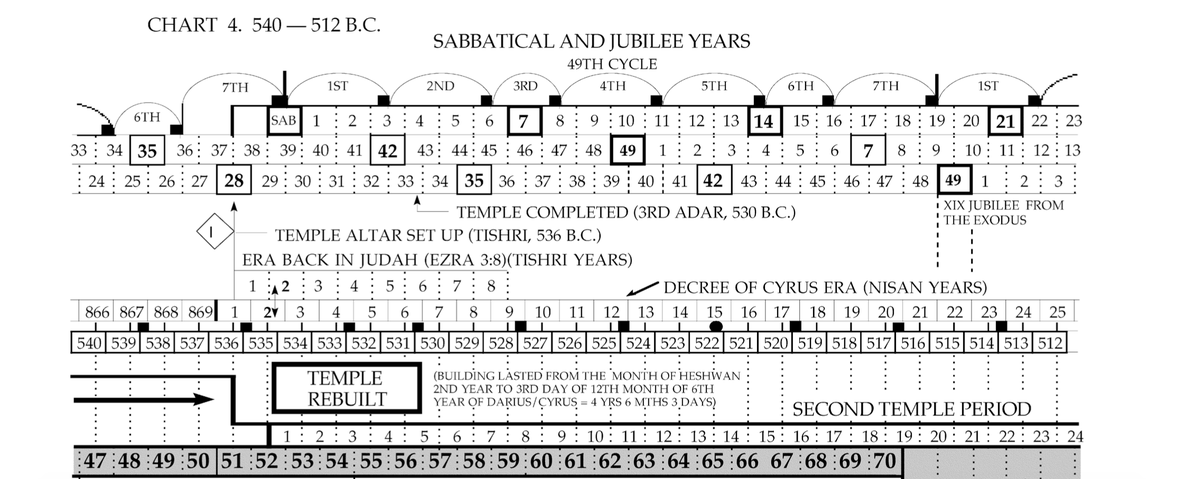In order to establish its course, the first thing we need to do is establish the duration of Israel’s (initial) stay in Canaan,
To do that, however, we can’t simply total up all the reigns recorded in Kings and Chronicles (due to the existence of co-regencies), as we’ve seen.
First, the exodus took place between 479 and 480 years prior to the 2nd month of Solomon’s 4th year—i.e., April/May of 968t/967t BC—, which yields a date for the exodus of Nisan 1446 BC.
at which point they observed their 40th Passover and began to eat the produce of Canaan, i.e., crops they hadn’t sown (Josh. 5, 24.13).
Or, to put the point another way, 1407t/1406t notionally became a Jubilee year.
And, contra the claims of some commentators, the Jubilee needn’t be seen as a later Priestly concept.
And the text of Lev. 25 appears to contain a number of archaic terms.
neither of which occur outside of Lev. 25 in Scripture, yet have cognates in 13th cent. Ugaritic texts.
which occurs in numerous legal texts and exactly parallels the Hebrew לצמיתֻת … לדֹרֹתיו (Lev. 25.30) (so Rabinowitz 1958).
We have established three dates: dates for the start of the Jubilee cycle, the rise of Solomon, and the fall of Jerusalem.
These three dates are supported by at least three independent lines of evidence.
As Thiele et al. have shown (cp. above), a consistent and continuous Judahite king list can be constructed from the data contained in Kings and Chronicles,
Second, the chronological data contained in the book of Judges.
Given the data contained in the book of Judges, a plausible history of Israel’s early years in Canaan can be reconstructed,
And, significantly, the superscript of Ezekiel’s final vision identifies ‘the 25th year of the exile’ as a Jubilee year.
How can both of these statements be accurate?
Why would Ezekiel refer to the 10th day of a month as ‘the head of the year’?
because the year in question was a Jubilee year, which began, as it always does, on the day of Atonement, i.e., on the 10th day of Tishri (Lev. 25.8–11).
But the 30th year of what?
The answer is ‘the 30th year of Ezekiel’s Jubilee cycle’.
THE END (FOR NOW).










